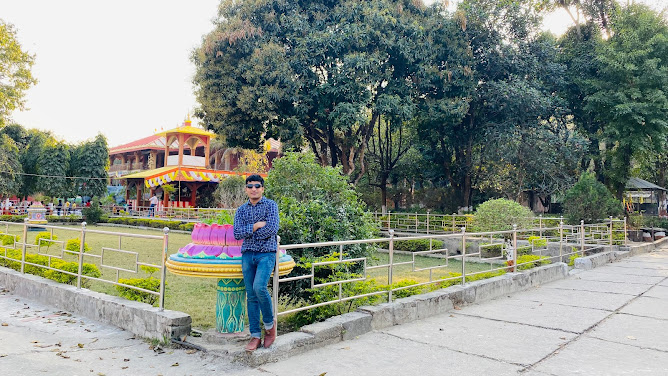Introduction: Nestled in the lap of the Himalayas, Nepal is a land of breathtaking natural beauty and rich cultural heritage. While the country is renowned for its trekking and mountaineering adventures, it is also gaining recognition for its rural tourism offerings. Rural tourism, characterized by visits to rural areas, has emerged as a significant contributor to the rural economy of Nepal. This article delves into the importance of rural tourism, its impact on the economy, and the sustainable development of rural communities.
Importance of Rural Tourism in Nepal: Rural tourism plays a crucial role in promoting sustainable development and preserving Nepal's local culture. Unlike mainstream tourism centered around urban areas, rural tourism enables visitors to experience the authentic rural lifestyle, immerse themselves in local customs, and engage with rural communities. By showcasing Nepal's rural landscapes and heritage, rural tourism helps preserve traditional practices, art forms, and indigenous knowledge that might otherwise fade away in the face of modernization.
Natural and Cultural Attractions: Nepal's rural areas boast a plethora of natural and cultural attractions that entice tourists. The country's diverse topography includes snow-capped mountains, lush forests, fertile valleys, and meandering rivers. Rural communities showcase their traditional architecture, colorful festivals, handicrafts, and age-old traditions. From the terraced fields of the Himalayan region to the rural homestays in the hilly area, Nepal offers a unique tapestry of experiences for rural tourists.
Community Empowerment and Income Generation: Rural tourism provides valuable opportunities for income generation and entrepreneurship within local communities. By participating in tourism-related activities, rural residents can diversify their income sources beyond traditional farming and engage in small-scale enterprises. Homestays, for example, enable tourists to stay with local families, creating an intimate cultural exchange while generating income for the hosts. Additionally, community-based tourism initiatives empower rural communities by involving them in decision-making processes and allowing them to benefit directly from the tourism industry.
Infrastructure and Services Development: Rural tourism has spurred the development of essential infrastructure and services in previously underserved areas. As the demand for rural tourism grows, investments have been made to improve transportation networks, accommodations, and other amenities. Improved road connectivity and transportation options have made rural areas more accessible to tourists. Local entrepreneurs have seized opportunities to develop guesthouses, eco-lodges, and camping facilities, creating employment opportunities for locals and boosting the overall economy.
Collaboration and Partnerships: The success of rural tourism in Nepal relies on collaboration and partnerships between various stakeholders. Government agencies, non-governmental organizations (NGOs), and local communities work together to promote sustainable tourism practices, protect natural resources, and preserve cultural heritage. These partnerships encourage responsible tourism that benefits both visitors and local communities. Moreover, NGOs and tourism organizations provide training and capacity-building programs to equip rural residents with the necessary skills to engage with tourists effectively.
Case Studies: Several successful rural tourism initiatives in Nepal exemplify the positive impact on the rural economy and community development. The "Community Homestay Network" in Sirubari village showcases the warm hospitality of the Gurung community while generating income for the villagers. In the Annapurna region, the "Ghalegaun Homestay" project has transformed the lives of the Ghale community by offering visitors an authentic cultural experience. These initiatives have not only provided economic opportunities but have also facilitated infrastructure development, such as schools, healthcare facilities, and clean drinking water systems.
Challenges and Future Opportunities: While rural tourism in Nepal has made significant strides, challenges remain. Seasonality, limited resources, and inadequate infrastructure are some of the hurdles faced by rural communities. However, these challenges can be addressed through targeted interventions. The promotion of off-season tourism, sustainable resource management, and investments in infrastructure development are crucial for the long-term growth of rural tourism. Embracing digital technologies and marketing strategies can also enhance the visibility of rural destinations and attract more tourists.
Conclusion: Rural tourism has emerged as a vital contributor to the rural economy of Nepal, offering economic opportunities and promoting sustainable development. By showcasing Nepal's natural beauty and cultural heritage, rural tourism not only benefits tourists but also supports local communities. As Nepal continues to harness the potential of rural tourism, it is essential to prioritize sustainable practices, involve local communities, and foster collaboration among stakeholders. By doing so, Nepal can unlock the full potential of its rural areas, ensuring a prosperous and inclusive future for rural tourism and the rural economy as a whole.
References:
-Anderson, L., & Sharma, R. (2023). Community-based tourism initiatives in rural Nepal: A qualitative study on empowerment and income generation. Journal of Rural Studies, 40, 85-102.
-Jha, A. R., & Patel, S. K. (2023). Assessing the economic impact of rural tourism in Nepal: A quantitative analysis. Tourism Economics, 28(2), 210-227.













